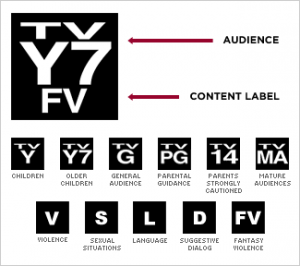Learning Unit 8:
Violence in Mass Media
Introduction
Violence is overrepresented in mass media, as we learned when we introduced the cultivation theory in learning unit 3. Films and TV shows frequently contain violent scenes that make them more spectacular.
The omnipresence of violence in this type of media is the necessary response to the public’s demand. Violence seems to appeal to human nature. And this is not just a contemporary phenomenon. The first literary documents in the Western civilization, Homer’s Iliad and the Odyssey, contain a notable number of violent deeds portrayed with the most vivid explicitness.
The overwhelming amount of violence in mass media has been one of the recurrent worries among communication scholars. They have been trying to figure out which the actual effects of violent media contents on individual and society were. The concern about the effects of depicted violence seems particularly justified in the case of younger audiences.
Is there any connection between exposure to violent media contents and becoming a violent person?
Do mass media contribute to make society a more dangerous place to live?
This lecture will try to help you answer those questions. And as you will see, the answer will not be a simple one.
Legislative History
The first legislative attempt to explore the effects of violence in media contents was the National Commission on the Causes and prevention of Violence, created by president Lindon Johnson in 1969.
The commission was not able to find any conclusive evidence of a direct link between media violence and aggressive behavior. In spite of that, the federal administration started a number of legislative measures to restrict violence.
In the 1980s, under the presidency of Ronald Reagan, the Federal Communications Commission loosened the previous restrictions as a way to restore the integrity of the first amendment, which guarantees the freedom of expression. The new legislation was considered a triumph for the entertainment industry. Ronald Reagan, for those who do not know it, had been an actor in Hollywood before he started his political career.
In 1990, the Children’s Television Act added some restriction for TV, making sure that certain contents, including advertising, would be restricted during the time children could be watching TV.
In 1996, the Telecommunication Act forced TV sets manufacturers to add a V-Chip that would allow parents to monitor and block certain contents for their children.

Violence Defined
George Gerbner (you should be already familiar with this name), defined violence in 1972 as:
“The overt expression of physical force against self or other, compelling action against one’s will on pain of being hurt or killed, or actually hurting or killing”.
This definition, accepted as the canonical one in communication sciences, leaves some gray areas.
For instance: could verbal violence be considered a type of actual violence?
Or accidents?
Or suicides?
Or news footage?
If answer yes to these questions, then we can state that
8 out of 10 TV shows contain explicit violence,
and 6 out of 10 characters are involved in violent actions.
The Perception of Violence
Violence in mass media, this is one of the first research findings, would not have a homogeneous effect on the audience. Each individual, based on her/hsi psychological profile, might react differently to the exposure of explicit violence.
The context in which violence is framed plays an important role in our perception. The more comfortable we feel in that particular environment, the more we tend to legitimate violence as a means to solve conflicts.
Joel Federman* points at five factors that can make media violence particularly dangerous:
- The perpetrator is in an attractive role model.
- Violence is morally justified through the narrative.
- Violence is not punished.
- Consequences for the victims are minimized.
- Violence is portrayed in a realistic way.
The Actual Impact
In the article I attached as reading for this learning unit, you will find a meticulous analysis of the research on the actual impact of media violence. This impact is studied in three different categories:
- Behavioral Effects
- Emotional Effects and
- Cognitive Effects
These three categories will play an important role in the exam. Make sure that you understand the difference and are able to distinguish the nuances.
The behavioral effects listed in the article are:
- Arousal
- Disinhibition
- Imitation
- Desensitization
- Catharsis
The emotional Effects:
Short term:
- Fright, anxiety, loss of control over feelings, nightmares, …
Long term:
- Persistent fear of becoming a victim, difficulty coping with dangerous situations, …
The cognitive effects:
- This category relates to how mass media determine the way we perceive the world around us. Again, the reference to George Gerbner’s Cultivation Theory is key to understand this type of effects.
